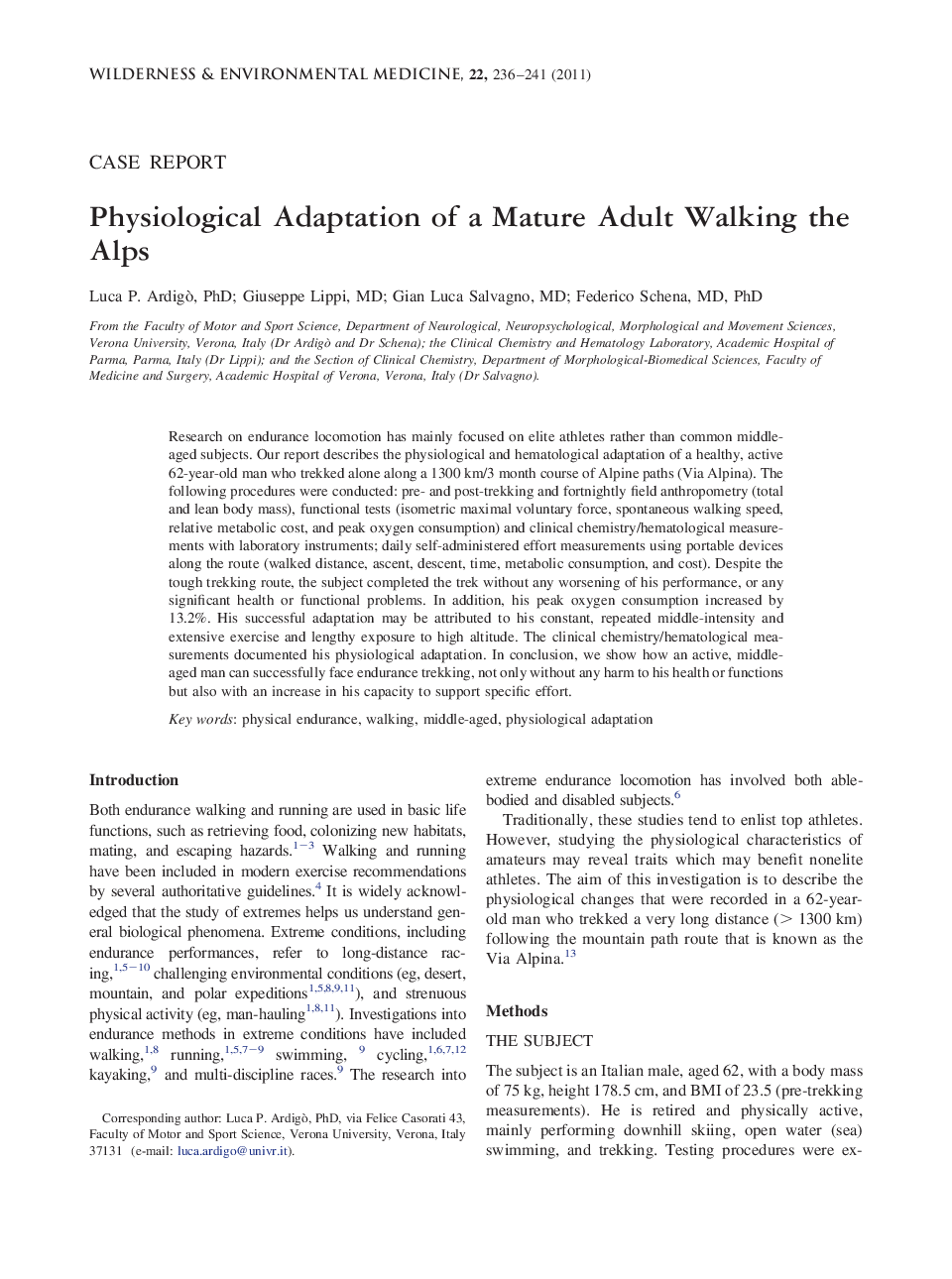| Article ID | Journal | Published Year | Pages | File Type |
|---|---|---|---|---|
| 2614942 | Wilderness & Environmental Medicine | 2011 | 6 Pages |
Research on endurance locomotion has mainly focused on elite athletes rather than common middle-aged subjects. Our report describes the physiological and hematological adaptation of a healthy, active 62-year-old man who trekked alone along a 1300 km/3 month course of Alpine paths (Via Alpina). The following procedures were conducted: pre- and post-trekking and fortnightly field anthropometry (total and lean body mass), functional tests (isometric maximal voluntary force, spontaneous walking speed, relative metabolic cost, and peak oxygen consumption) and clinical chemistry/hematological measurements with laboratory instruments; daily self-administered effort measurements using portable devices along the route (walked distance, ascent, descent, time, metabolic consumption, and cost). Despite the tough trekking route, the subject completed the trek without any worsening of his performance, or any significant health or functional problems. In addition, his peak oxygen consumption increased by 13.2%. His successful adaptation may be attributed to his constant, repeated middle-intensity and extensive exercise and lengthy exposure to high altitude. The clinical chemistry/hematological measurements documented his physiological adaptation. In conclusion, we show how an active, middle-aged man can successfully face endurance trekking, not only without any harm to his health or functions but also with an increase in his capacity to support specific effort.
